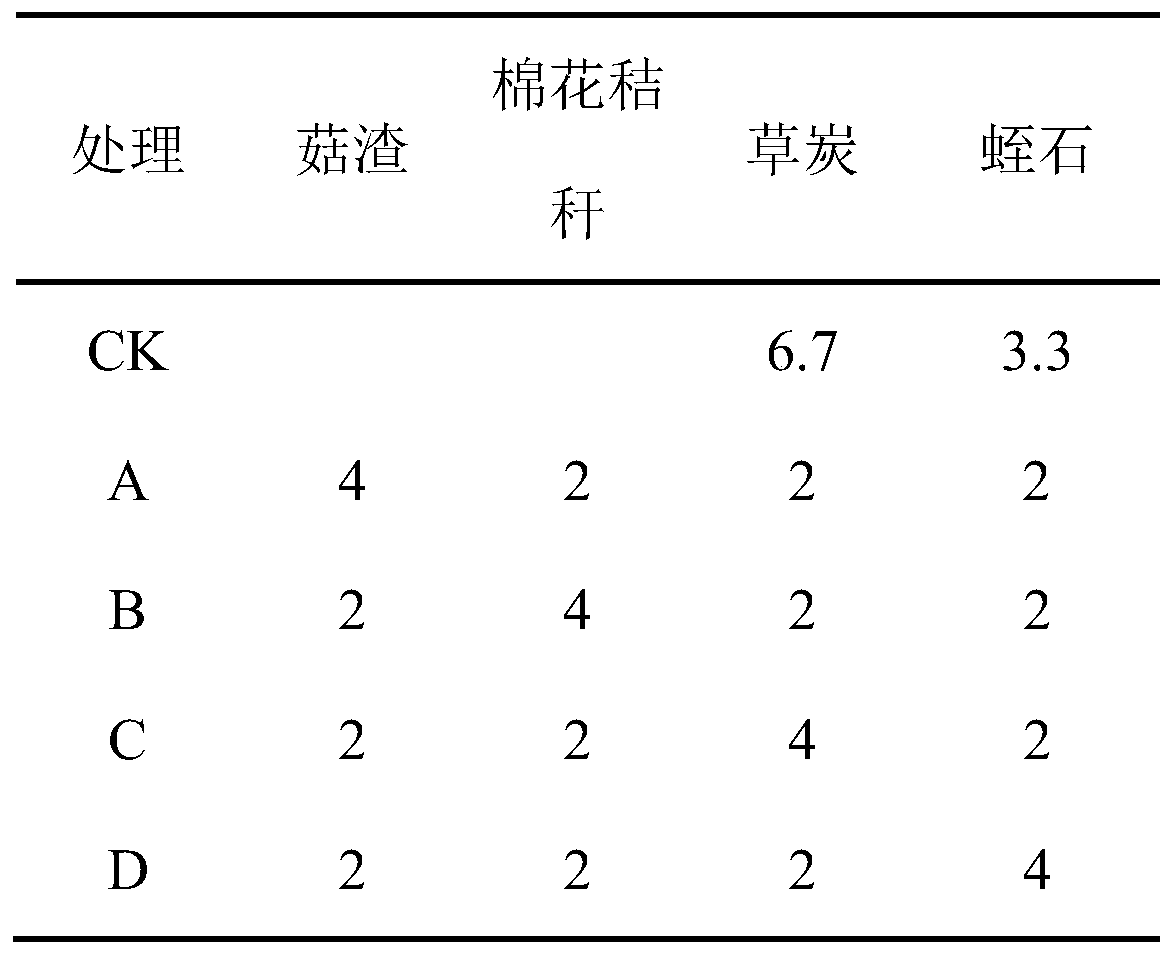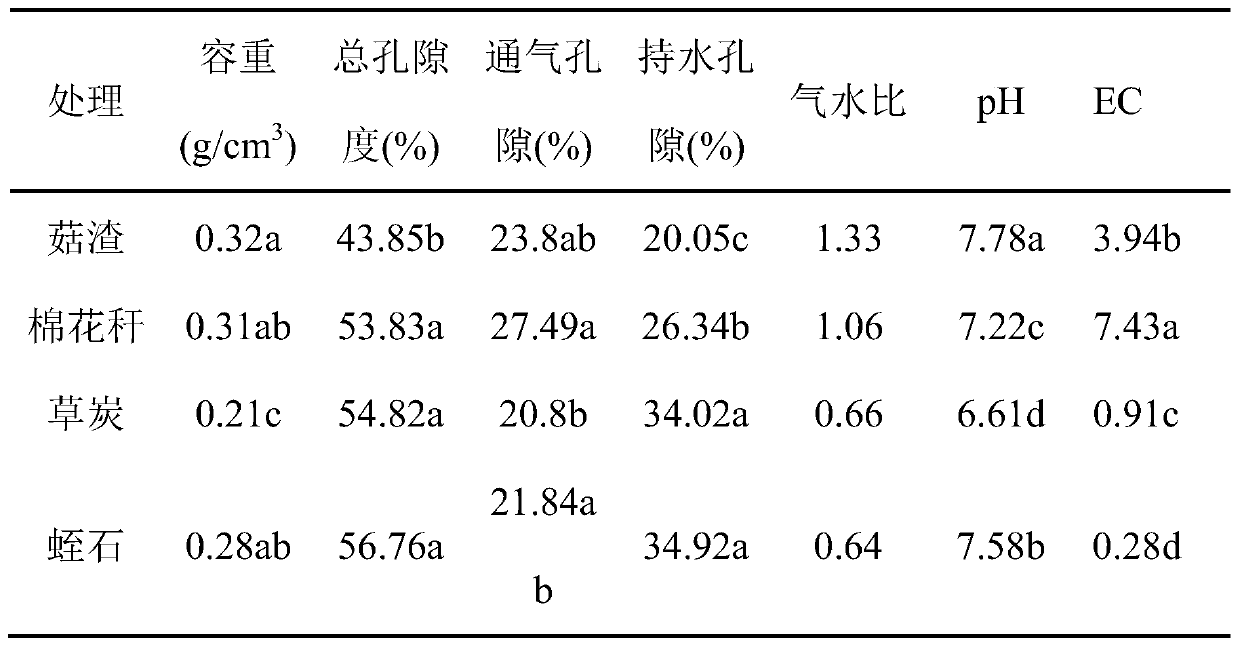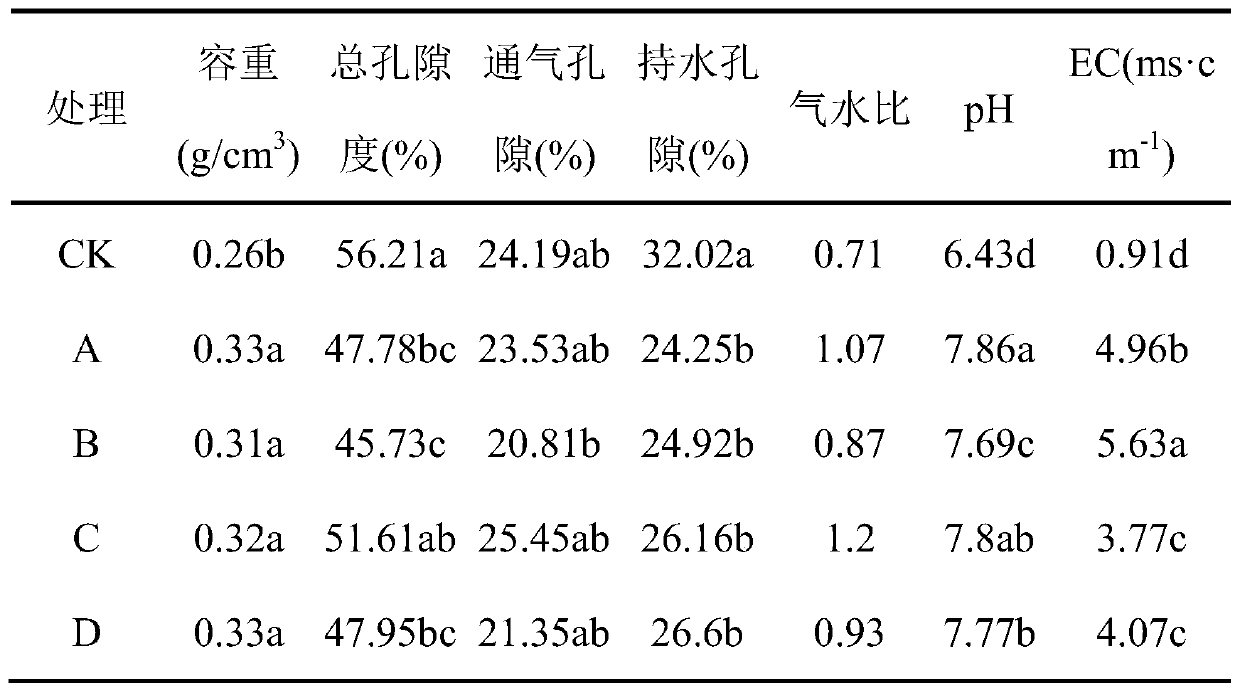Little cabbage cultivation medium taking agricultural waste as main material and preparation method of little cabbage cultivation medium
A technology for agricultural waste and cultivation substrate, which is applied in the field of pakchoi cultivation substrate and its preparation, can solve the problems of soil salinization, quality decline, soil continuous cropping obstacles, etc., and achieves the promotion of plant growth and development, high nutrient content and cost reduction. Effect
- Summary
- Abstract
- Description
- Claims
- Application Information
AI Technical Summary
Problems solved by technology
Method used
Image
Examples
Embodiment Construction
[0034] The following will clearly and completely describe the technical solutions in the embodiments of the present invention with reference to the accompanying drawings in the embodiments of the present invention. Obviously, the described embodiments are only some, not all, embodiments of the present invention. Based on the embodiments of the present invention, all other embodiments obtained by persons of ordinary skill in the art without making creative efforts belong to the protection scope of the present invention.
[0035] The pakchoi cultivation substrate with agricultural waste as the main material described in this specific embodiment contains the following components by volume ratio: 4 parts of cotton stalks, 2 parts of mushroom dregs, 2 parts of peat, and 2 parts of vermiculite.
[0036] The preparation method of the pakchoi cultivation substrate with agricultural waste as the main ingredient described in this specific embodiment, its operation steps are as follows: ...
PUM
| Property | Measurement | Unit |
|---|---|---|
| Bottom width | aaaaa | aaaaa |
Abstract
Description
Claims
Application Information
 Login to View More
Login to View More - R&D
- Intellectual Property
- Life Sciences
- Materials
- Tech Scout
- Unparalleled Data Quality
- Higher Quality Content
- 60% Fewer Hallucinations
Browse by: Latest US Patents, China's latest patents, Technical Efficacy Thesaurus, Application Domain, Technology Topic, Popular Technical Reports.
© 2025 PatSnap. All rights reserved.Legal|Privacy policy|Modern Slavery Act Transparency Statement|Sitemap|About US| Contact US: help@patsnap.com



